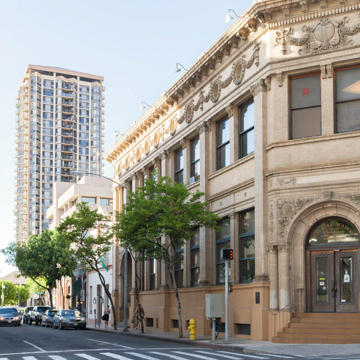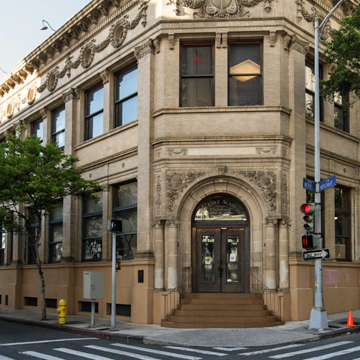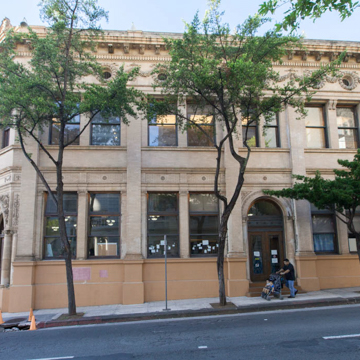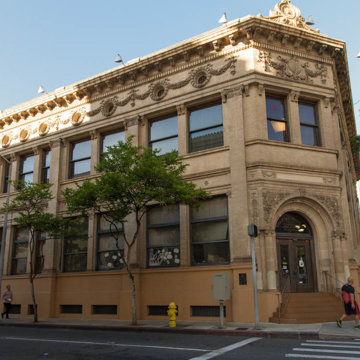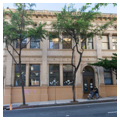This yellow brick building was proclaimed completely fireproof when it opened because of its sand-filled copper windows. The terra-cotta ornamentation on the round-arched corner entrance and the frieze, with wreathed oculi, garlands, and swags, is of high quality. The medallion rising over the entrance bay depicts this Japanese bank's insignia.
A Honolulu branch of the Yokohama Specie Bank was established in 1892, initially operating out of the Japanese consulate. In response to increasing business, this building was erected and served the bank until December 7, 1941, when Governor Poindexter closed it and two other Japanese banks. In February 1942, the U.S. Department of the Treasury commenced liquidation of the three banks' more than twelve million dollars' worth of assets, including their deposits. Depositors who were U.S. citizens or deemed non-enemy aliens had their deposits returned in 1943, but many issei (first-generation Japanese) bank members did not see their money until 1949. It took another eighteen years and numerous court appearances before the American government agreed to pay interest on the impounded funds. The U.S. Department of Justice, through its Alien Property Custodian, sold the building in 1954, and, since then, it has had many different occupants.
H. L. Kerr (1863–1937) was one of the most prolific Honolulu architects of the early twentieth century. Born in Ulster County, New York, he trained in an architect's office prior to establishing his own firm in 1883. He practiced architecture in New York City, San Diego, Washington State, and Portland, Oregon, before coming to Hawaii in 1898, where he remained. He handled a wide variety of period styles and designed more than one thousand buildings in the first quarter of the twentieth century.


